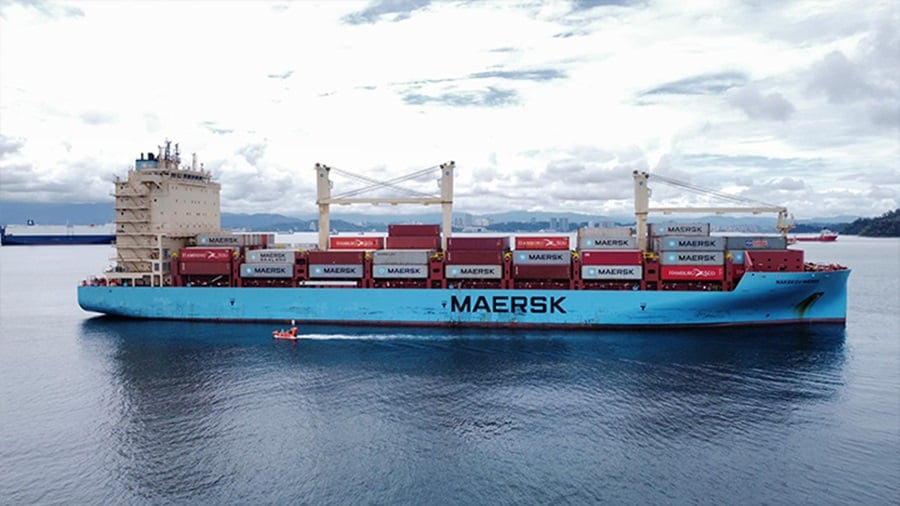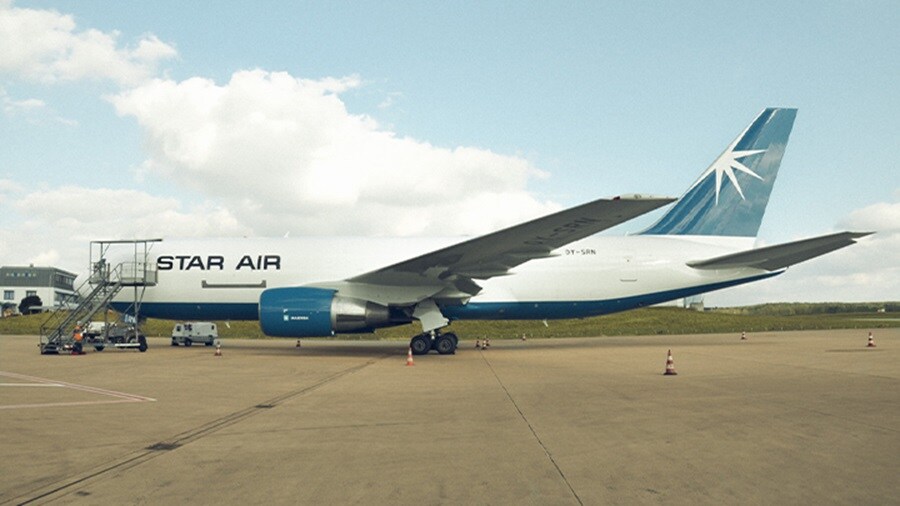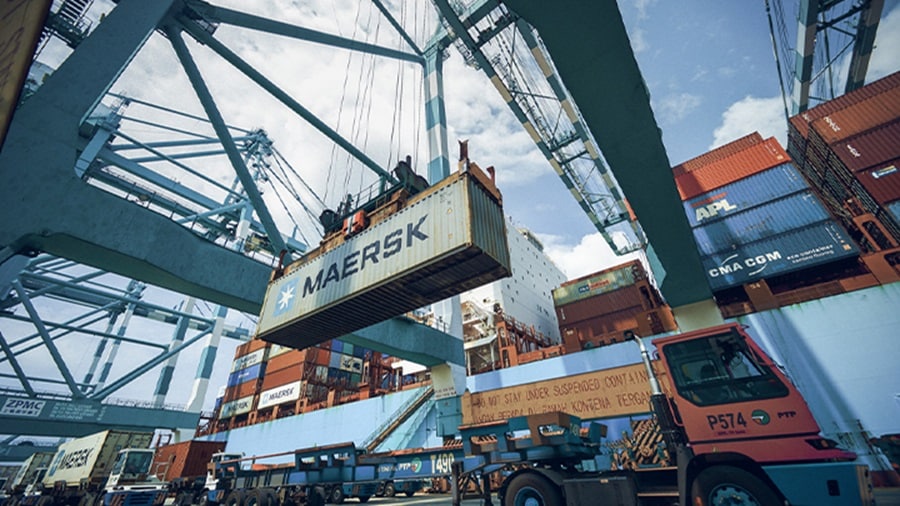Customers are continuing to face a raft of challenges as the Russia-Ukraine conflict weighs on the longer-term outlook for the global economy amid concern that inflation and higher energy prices will lead to lower consumer demand, damaging international trade. The short-term, however, is more positive. Cargo volumes through Shanghai are returning to pre-lockdown levels and demand from US consumers is pulling forward the peak shipping season on North American trades. Maersk continues to do its best to mitigate the impact of on-going port congestion, with the deployment of extra loaders where possible, the rescheduling of services and in New Zealand, the launch this month of our Coastal Connect service to improve port connectivity.
Market Trends
The Russia-Ukraine conflict and the ensuing sanctions imposed on Moscow are adding to inflationary pressures globally and raising fears of a possible recession. The situation is adding pressure on central banks to tighten monetary policies including increasing interest rates. Key to the outlook for trade is how consumers and businesses react to the elevated uncertainty, higher prices, and policy changes. In the near-term, global expansion will continue, supported by pent-up demand and the re-opening of economies. But longer-term, substantial monetary policy tightening will increasingly weigh on economic activity with additional concerns about the outlook for China which has COVID-19 led economic consequences. Potential scenarios depend heavily on the path of inflation and the geopolitical fallout from the war in Ukraine.
Trade Outlook
Global trade volumes declined by 2.5 percent in May compared with a year earlier and year-to-date growth is down by a similar level, although these come off last year’s elevated levels. Container imports into Europe were negatively impacted by the Ukraine conflict as volumes following the imposition of sanctions and a broader weakening in demand. Imports into Asia were depressed due to COVID-19 lockdowns in China and a general slowdown in China’s housing market. Imports into North America were stable at a very high level. The outlook remains highly uncertain, and we mainly see downside risks to our base scenario.
Trending Topic
Shanghai situation: With Shanghai gradually returning to normal after the two-month city-wide lockdown in April and May, factory production is picking up and demand rebounded nicely in July with positive signs of a seasonal peak on many trades. Trucking in the city area has also been fully restored. Intra-provincial trucking is also back to pre-lockdown levels although truckers are subject to local testing requirements. The current situation is dynamic and subject to change, so we suggest you check with your local Maersk team for the latest information.
Ocean Update
The situation in Shanghai is normalizing but is still both fluid and hard to predict – this combined with the strikes in Europe and the continuous congestion in the ports in North America means that our customers have a larger need for flexibility and agility than ever. Our focus is on delivering just that to help support the fulfilment of their customer promises.

Port Congestion: Terminal congestion, especially in North America and Europe, is continuing to adversely affect schedule reliability. Strikes in Germany, especially at Bremerhaven, Hamburg and Wilhelmshaven, have exacerbated the disruption caused by vessel delays. At Rotterdam, Maersk is exploring several congestion easing options including off-dock options and redirecting cargo to facilities elsewhere including Zeebrugge and Gdansk. We are also resetting some transatlantic and Asia-North America services either by changing voyage numbers to reflect actual departure dates or vessel sliding. Please check Maersk customer advisories for the latest information.
Key Market Outlook Across Trade Lanes
| Trade | Trade Statement | The most critical destination port situation update |
|---|---|---|
|
Trade
Asia Pacific - North Europe
|
Trade Statement
North European trade demand is stable, but networks are facing severe pressure due to port congestion. We are deploying additional loaders to maintain network stability.
|
The most critical destination port situation update
High yard density and holiday season labour shortages are adding to congestion issues. The situation is further worsened by labour strikes, particularly in Germany. |
|
Trade
Asia Pacific -Mediterranean
|
Trade Statement
Demand is stable from long-term customers and flat for spot cargo. We forecast the network will be marginally full for Q3. Vessels are being delayed by congestion at both origin and destination and we will continue with voyages reset to recover schedule reliability. Gap loaders will be used where possible to meet customers’ schedule requests.
|
The most critical destination port situation update
Israel and Algeria have reopened for short term acceptance. Constanta (Romania) has resumed operation after a short term closed up due to yard density in mid of July. |
|
Trade
Asia Pacific - North America
|
Trade Statement
Overall, the Asia Pacific to North America overflow issue is gradually improving. Export volumes in the second half of July and August are expected to increase. North American port congestion is worsening, increasing the likelihood of more missed sailings. USEC port congestion delays vary from port to port although the overall waiting time is 0-3 days. At Savannah congestion is 10-15 days and Houston congestion is up to 14 days. Los Angeles and Long Beach waiting time slightly reduced to 15 days. Vancouver waiting time reduced to 7 days, however congestion is still severe with yard density increased to 113% and rail dwell time increased to a minimum of 10 days. Prince Rupert’s waiting time is reduced to 5 days but with 122% yard density, which means Price Rupert port cannot store any more cargoes. Prince Rupert terminal still requires 100% match-back. Departed rail dwell increased from 5 days to 12 days. Due to the above severe Pacific North West ports congestion, we are seeing chronic missing sailing challenges for TP1 and TP9. Please expect the delay of shipments as the extreme terminal condition does not allow us to send more loaders to Vancouver or Prince Rupert to mitigate the capacity loss. At Maersk, we are working on optimizing the network setup and berth windows to bring customers a better shipping experience. Meanwhile, as we cannot expect the North American ports situation to improve in the coming months, we are seeing more overflow in the network due to strong demand and missed sailings, we would kindly suggest our customers prepare more lead time between ETA and actual departure time. |
The most critical destination port situation update
Overall wait time:
USEC ports: 0-3 days Savannah: 10-15 days Houston: 14 days Los Angeles/Long beach: 12-24 days Oakland: 7 days Seattle: 2 days Vancouver: 7 days waiting time, with 113% yard density Prince Rupert: 5 days waiting time with 122% yard density. Match back is strictly required. |
|
Trade
Asia Pacific - Latin America
|
Trade Statement
Overall market demand on the Latin America trade is very strong in Q3 from the traditional peak season. Non-operated reefers (NOR) are still key for Q3. ECSA - Rates have increased quickly for July and rates are forecast to continue to increase in August with demand remaining very strong. WCSA – Rates are trending slightly softer in July due to extra loaders in the market especially to Mexico, but rates and demand are forecast to be stable in July and August. |
The most critical destination port situation update
|
|
Trade
Asia Pacific - West Central Asia
|
Trade Statement
Tight space in the network. We are closely monitoring the evolving situation in Sri Lanka and Pakistan. Ranil Wickremesinghe was elected as Sri Lanka’s new president on July 20. In Pakistan, the government has restricted the issue of Letters of Credit to automotive and technology customers. The situation is expected to remain the same until mid-August. There are expected to be increased opportunities for solar-related raw material imports in India from Q3. |
The most critical destination port situation update
In Colombo, port and terminal operations are operating normally although Customs could be affected by staffing issues.
|
|
Trade
Asia Pacific - Africa
|
Trade Statement
West Africa: Demand has softened compared with the last two months especially for Ghana and Nigeria, while Angola is picking up. As a result, capacity is tightening. Market rates are easing, and we will keep our volume drive on SPOT and Twill. South Africa: Market demand is improving compared with Q2 and NOR is still the key for Q3. Overall market rate is stable. East Africa: Demand is gradually picking up. Space on the Dar Es Salaam service is quite full and customers are advised to arrange advance booking. The Mombasa service is running smoothly; we will focus on further improving schedule reliability. |
The most critical destination port situation update
Abidjan: 5-7 days wait time.
Dar Es Salaam: 5 days wait time. |
|
Trade
Asia Pacific - Oceania
|
Trade Statement
AUS market is expected to be soft due to increased capacity (~30%), and ASL is about to launch a new service from GCA-AUEC at the end of Aug, adding additional pressure to the existing situation. Destination ports face severe delays impacting AUSYD/AUBNE further worsen the situation. New Zealand market is expected to hold into Aug, however, Auckland port productivity is impacted due to labor shortage and vessel bunching, expect waiting time to be 7-10 days. |
The most critical destination port situation update
|
|
Trade
Oceania - World
|
Trade Statement
To assist our customers in accommodating additional demand of perishable export cargo, Maersk is making additional reefer containers available in Sydney and Melbourne during the August to October period. To meet the surge in demand from Western Australia, we are increasing capacity between Freemantle and South East Asian hub ports during August and September with Southern Star inducement in Freemantle on a fortnightly basis We are pleased to advise customers that we have adjusted our network to enable additional volume opportunities to connect your cargo between Oceania and India Subcontinent during August & September. In New Zealand the Ocean Supply Chain remain disrupted with berthing windows remaining suspended. To Improve reliability and connectivity of our New Zealand network Maersk has launched a new service New Zealand Coastal Connect that will hit the New Zealand coast in July. |
The most critical destination port situation update
Bad weather in Sydney led to port closures in July creating delays across all services. Auckland port waiting time continue with vessel bunching and labour shortages contributing to delays |
|
Trade
Import - Asia Pacific
|
Trade Statement
Terminals in China are operating normally as authorities manage the COVID-19 situation. Average vessel wait time at ports in Asia are 0-3 days. Disruption caused by typhoons, especially at South China ports, could potentially cause 1-2 days’ delay. With ports in Europe and North America continuing to face congestion, cargo imports to Asia may also face delivery delays. Freetime extension products for both Spot and contract customers are available. |
The most critical destination port situation update
Equipment/space availability at Keelung depot is at a critical level and we suggest customers place bookings into Kaohsiung and ports in Mainland China, and Hong Kong as alternative solutions. The Sakura feeder service in Japan is still facing capacity shortages and the Japan team is taking measures to clear the bottleneck. |
Air Update

Greater China: Volumes have fallen in July due to the impact of summer holidays. There is minimal impact on airfreight from sporadic COVID-19 outbreaks in China. Carriers have cancelled several flights to Europe and North America due to lower cargo demand. Air cargo freight rates have also fallen, making air cargo more attractive to customers. In Hong Kong, capacity has increased as airlines reintroduced more flights after the government eased COVID-19 restrictions Fuel surcharges increased from July 1 from HKD5.10/kg to HKD6.10/kg on chargeable kgs.
Maersk has been working continuously on the development of air products. For Maersk Air-Sea please click here to download our brochure.
Australia and New Zealand: As China slowly returns to pre-lockdown operational levels, extra airline capacity has led freight rates to fall across all origin airports into Oceania. There is still a cargo backlog at Shanghai which is lengthening the transit times between international airports. The Trans-Tasman markets remain challenging for consumers as airlines continue to hold off releasing new capacity.
Vietnam: Freight rates are falling as capacity is increasing.
Indonesia: Markets are mostly stable but extended transit times impact supply chains.
Japan: Operators are coming under increasing pressure to make domestic transportation of pharma products GDP compliant following the influx of COVID-19 related vaccines into Japan with calls for the creation of a quality certification system. So far, the Japanese version of the GDP guidelines have not yet been legislated and are not enforceable. International logistics will continue to be disrupted due to lack of space and restrictions on cargo handling at airport facilities.
Inland Services Update

Greater China: Maersk’s intermodal sea-rail and barge services are back to normal after COVID-19 related disruption. For trucking, some potential surcharges could be levied including highway toll fees and lead times may also face challenges. Warehousing operations in mainland China, Hong Kong and Taiwan are operating normally as we move into the peak season.
ICR: We launched ICR services from China to Thailand, Laos and Vietnam in May which are attracting increasing interest from customers.
Australia and New Zealand: Berthing delays across all ports caused by severe weather on the East Coast are impacting final ETA, destuffing and final availability of cargo for delivery to end consignees. Congestion at Auckland caused by labour shortages and vessel bunching is leading to vessel delays of up to eight days which is impacting container availability, final delivery to end users and extended transit times. The new Stink Bug (BMSB) season starts around September 1 until May 31, 2023. Updated rates will be released in August with confirmation of China as an emerging risk market.
Japan and Korea: The volume of container drayage is stable, and a slight slackening is expected in August due to the holiday season.
Thailand, Malaysia and Singapore: The three countries are not seeing the same level of the recovery in volumes experienced by Greater China. They could also be hit if there is a downturn in demand from developed countries due to rising inflation and fuel prices.
Major Ports Update
Major ports update (Vessel waiting time indicator)
| Area | Less than 1 day | 1-3 days | More than 3 days |
|---|---|---|---|
|
Area
APA Ports
|
Less than 1 day
Dalian, Xingang, Xiamen, Nansha, Hong Kong, Singapore, Port Klang, Tanjung Pelepas
|
1-3 days
Busan, Qingdao, Shanghai, Ningbo, Shekou, Yantian, Lyttleton, Melbourne, Brisbane
|
More than 3 days
Tauranga, Auckland, Sydney
|
|
Area
Rest of World
|
Less than 1 day
Tema
|
1-3 days
Beira, Seattle, Newark, Norfolk, Charleston, Miami
|
More than 3 days
Hamburg, Rotterdam, Bremerhaven, Haifa, Koper, Long Beach, Los Angeles, Oakland, Vancouver, Prince Rupert, Savannah, Houston, Abidjan, Dar Es Salaam
|
Remark: Numbers are dynamic and subject to change.
Estamos aqui para ajudar em qualquer coisa que você precisar
I agree to receive logistics related news and marketing updates by email, phone, messaging services (e.g. WhatsApp) and other digital platforms, including but not limited to social media (e.g., LinkedIn) from A. P. Moller-Maersk and its affiliated companies (see latest company overview). I understand that I can opt out of such Maersk communications at any time by clicking the unsubscribe link. To see how we use your personal data, please read our Privacy Notification.
By completing this form, you confirm that you agree to the use of your personal data by Maersk as described in our Privacy Notification.


